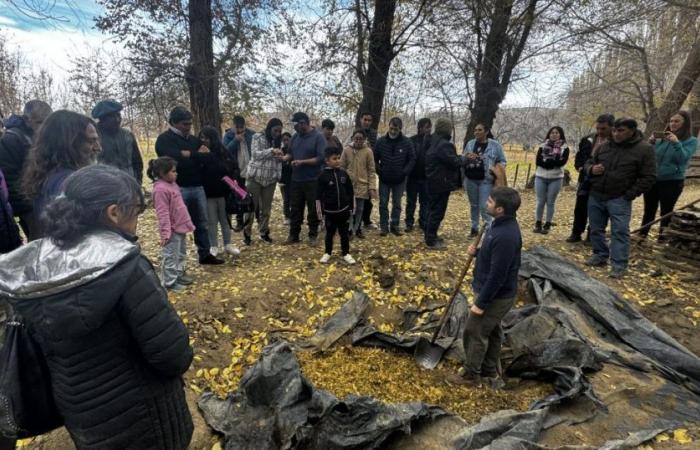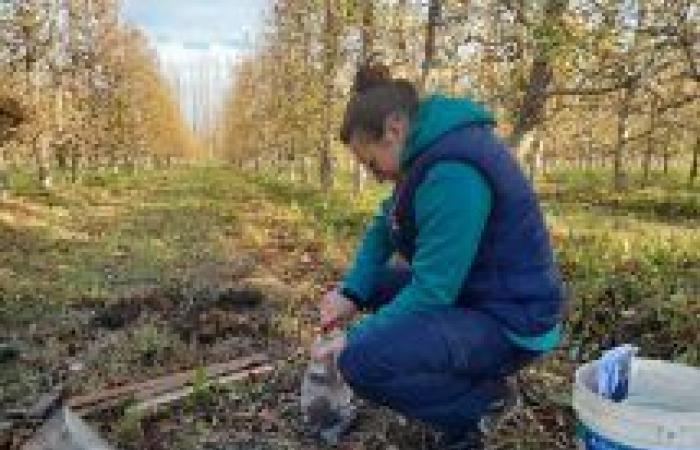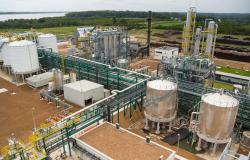By INTA.
The impacts of climate change in the Patagonian region, associated with extreme weather events, involve changes in average temperatures and access to common goods such as water and pastures for livestock. The alteration of local biodiversity presents new challenges for transhumant livestock farming in northern Neuquén, a scenario in which practices aimed at adapting to these new conditions emerge. To accompany this process, INTA Chos Malal and the Institute for Family Agriculture of INTA – IPAF Patagonia region work together with producer families in northern Neuquén on strategies and technologies aimed at improving animal nutrition and well-being..
Miguel Barros is a producer from the Neuquén town of Buta Ranquil, and carries out strategic supplementation of pine trees to overcome the lack of availability of natural grasslands.: “When those bad and dry years came (in 2012), we carried out a project to feed animals during calving times. We did an analysis with 70 goats, the thinnest, which produced 120 goats. It was 20 days before delivery that they were helped with food and then 20 more days with the goats.”
The adaptation of supplementation practices to productive conditions (such as the availability of plants in direct grazing) and commercial ones are evident in the testimonies of the producers.
María Beroiza, producer of Cajón del Manzano, belonging to the Mellao Morales community, explained: “The first thing I do is deworming and then I give them cracked corn, mix it and finish with fattening the steer. (…) I sell them in my area, in my community and then in the town of Las Lajas, Loncopué they order me. They already know that I make fat and then they ask me. Today I am the only one dedicated to fattening in the community.”
“When those bad and dry years came, we carried out a project to feed animals during calving times.”
Miguel Barros, producer from the Neuquén town of Buta Ranquil.
Supplementation systems in small areas seek to implement high loads and/or strategic enclosures (with pens and sheds) to improve livestock efficiency, having as an indicator the same wisdom of local producers: “I believe that the producer’s salvation is to give the animal what it deserves when it needs it.”, stressed Miguel Barros.
On the other hand, Noelia Rivera, a breeder from Chos Malal, told about the redesign of the management plan in her livestock production: “We have been developing feeding strategies in cattle and goat breeding. We try to increase the calving and weaning percentage, thinking about having fewer, but more productive animals.”. The strategies adopted in the face of climate change respond to the needs identified by the producing families themselves: “It is important to say that we have less grass and less food for the animals. These problems have always existed, but now they are having more relevance due to the issue of water and climate,” added Noelia Rivera. These livestock management experiences demonstrate the validity of the knowledge co-constructed with technical support in the territory, where the know-how offers some possible indications for a sustainable livestock practice in the region.
Another strategy to respond to the lack of availability of natural winter pasture (known as “forage patch”) It is corn silage to differ and have it available and at a lower cost to use at the end of winter.
“We try to increase the calving and weaning percentage, thinking about having fewer, but more productive animals.”
Noelia Rivera, breeder of Chos Malal.
In the area there are varieties of native corn (white and yellow) with a short cycle that families have conserved and multiplied for many years.. The technicians propose ensiling this material so that after 45 days you will have forage that can be preserved for several years if it is not exposed to air or water.
This fiber-rich food can be rationed to supplement maintenance (2% of live weight) and fattening (6% of live weight) animals. This was verified among producers, where they explained that “we have been making corn silage for 5 or 6 years and it gives very good results. We have silage sorghum and we hope it has good results as well,” says Lázaro Montecinos, a livestock producer from the Aquihuecó area. The high yield and low costs of this supplementation strategy complement the use of native corn seeds (white and yellow) by the producing families of the region..
All these strategies were addressed by INTA Chos Malal together with the Undersecretariat of Production of the Province of Neuquén and the IPAF Patagonia region (INTA) in an animal feeding day with a hundred producers who shared their practices: “We have seen that there are very good local food experiences, with their own resources, from the producers, with a high adaptability to climate change.. So we decided to give a voice to the producers, to make it a training from producer to producer, with the same language. Where everyone tells their experience and can make a true exchange,” said Marcelo Bosetti – head of the Chos Malal extension agency of INTA -.
“We have seen that there are very good local food experiences, with their own resources, from the producers, with a high adaptability to climate change.”
In this framework, the IPAF Patagonia team presented the progress of the socioeconomic surveys carried out within the framework of the Project “Strengthening health participation in climate action in Argentina” (also known as the Readiness Project) coordinated by the World Health Organization. In this work, some of the existing management strategies in the producing families and their positive impact on local livestock were identified and shared: “We see the participation of male and female producers as very valuable, and the exchange of experiences generated for the joint learning of strategies. of climate adaptation in the area,” commented Sofía Lammel, sociologist and participant in the Readiness project.
This knowledge arises from the experiences of families around animal nutrition., as well as tests and evaluations carried out on planting, supplementation, fencing, equipment and conservation techniques; which are some of the technological innovation processes that INTA undertakes for the sustainability of family farming.









